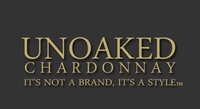 Spring is bringing warmer weather all across the northern hemisphere, with predictable results: Meals are turning lighter and fresher, and so are the wines that work best with them.
Spring is bringing warmer weather all across the northern hemisphere, with predictable results: Meals are turning lighter and fresher, and so are the wines that work best with them.
To be sure, spring and summer can still include hearty meals involving items like grilled steaks, and they can taste very good with hearty wines like Cabernet or Zinfandel almost regardless of the ambient temperature. Still, the fact remains that lighter food become more prominent as temperatures rise, and lighter wines with greater refreshment value rise in tandem for most consumers.
Most wine lovers are well aware of this, but those who don’t watch industry trends might not be aware of a general uptick in global appreciation of lighter, more delicate wines in recent years. Here are a few telling indicators:
 Exhibit One, The Pinot Grigio Boom: Pinot Grigio was no big deal a decade ago, but now it has surpassed Chardonnay as the leading imported varietal wine in the United States. Now, if you’ve had a chance to taste a fair number of Pinot Grigios, you’ll know that they don’t have a lot of flavor or character or body or alcohol or oak. In fact, the whole point of Pinot Grigio is not what it is but what it isn’t: It isn’t heavy, it isn’t oaky, and it isn’t Chardonnay. It sells like crazy, and does so almost solely on the strength of being light and refreshing.
Exhibit One, The Pinot Grigio Boom: Pinot Grigio was no big deal a decade ago, but now it has surpassed Chardonnay as the leading imported varietal wine in the United States. Now, if you’ve had a chance to taste a fair number of Pinot Grigios, you’ll know that they don’t have a lot of flavor or character or body or alcohol or oak. In fact, the whole point of Pinot Grigio is not what it is but what it isn’t: It isn’t heavy, it isn’t oaky, and it isn’t Chardonnay. It sells like crazy, and does so almost solely on the strength of being light and refreshing.
Exhibit Two, The Pinot Noir Boom: Yes, it is probably true that “Sideways” had a role in the ongoing Pinot Craze, but the movie is only sufficient to explain why some consumers took a first taste of Pinot–not why they seem to keep coming back to it despite its lightness relative to Cabernet or Shiraz. Pinot continues to ride high on a wave of popularity and, as with Pinot Grigio, it seems clear that it is succeeding because of–not despite–its lightness.
Exhibit Three, Un-wooded Chardonnay: Can you think of another case in which a wine (or any product, for that matter) is marketed on the basis of something that has not been done to it? Explicitly un-wooded Chardonnays debuted about six or seven years ago in Australia, which had formerly been the worst offender among Chardonnay producing countries in making whoppingly oaky, gooey Chards.
This lends credence to the notion that un-wooded Chardonnays are part of a wider backlash, and the backlash has now spread to many other countries such as New Zealand, Chile, South Africa and the USA. Moreover, many of those Chardonnays that are still fermented or aged in barrels now see much lower percentages of new wood, or are exposed to less aggressively toasted casks, or stay in them for a shorter period of time.
The Upshot: There’s still plenty of demand for Whopping Zins and Killer Cabs, but today’s consumers are far more respectful of lighter, more delicate wines than their counterparts tended to be a decade ago. There’s no “Party Line” here on Wine Review Online, but many of our writers have been extolling the virtues of this style for years, both because of its intrinsic merit and also because wines in this style prove so versatile at the table.
So, if you are about to make a seasonal shift to lighter wines, you might ask yourself: Should this be a merely seasonal shift, or a more enduring one?
1
